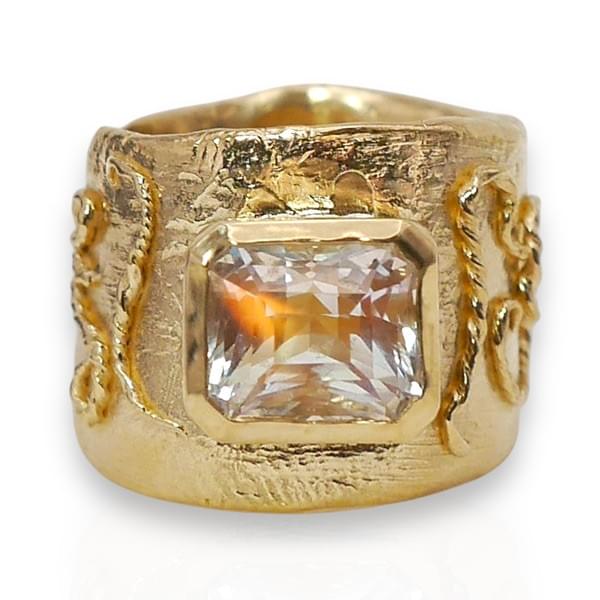
If bold gold is what you’re after, Los Angeles–based Evangeline Jewelry has delivered. Its new Cirrus ring combines a raw, weighty gold band with an ethereal 2.2 ct. faceted rainbow moonstone, carved and cast to mirror sunlight breaking through wispy clouds. Designer Evangeline Porche calls it a piece “meant to capture the fleeting beauty of the sky.”
The ring is undeniably stunning—mythological even, with its cigar-style band curling like serpents around a luminous center stone. But let’s talk about the elephant in the room: the gold.
With gold prices climbing to record highs, Porche admits the cost is “a challenge” when creating bold statement jewelry. Consumers are left wondering: does a heavy gold band justify its price in today’s market, or is this where lab-grown diamond jewelry steps in to challenge the hierarchy of what defines true luxury?
That’s the tension contemporary jewelers face. On one side, you have traditional materials like 18k gold, which carry historical weight but also rising costs and environmental strain. On the other, you have sustainable lab-created diamonds—chemically identical to mined stones, but priced significantly lower and far more accessible.
The Cirrus ring tells a story of artistic vision: moonstone’s shimmering adularescence reflecting light like a vapor trail in the sky. But imagine if that 2.2 ct. stone were flanked by lab-grown diamond accents—the price point could become more approachable, the sustainability credentials stronger, and the jewelry’s appeal to Gen Z buyers (who increasingly demand ethical sourcing) undeniable.
Porche sees customers “rejecting fast fashion” and investing in enduring pieces. That investment mindset aligns perfectly with the lab-grown diamond engagement ring movement, which allows buyers to access larger carat sizes without sacrificing design ambition.
So the real question becomes: will the next generation of bold jewelry be defined by gold’s weight—or by the brilliance of sustainable, lab-grown stones that rewrite the value equation?
